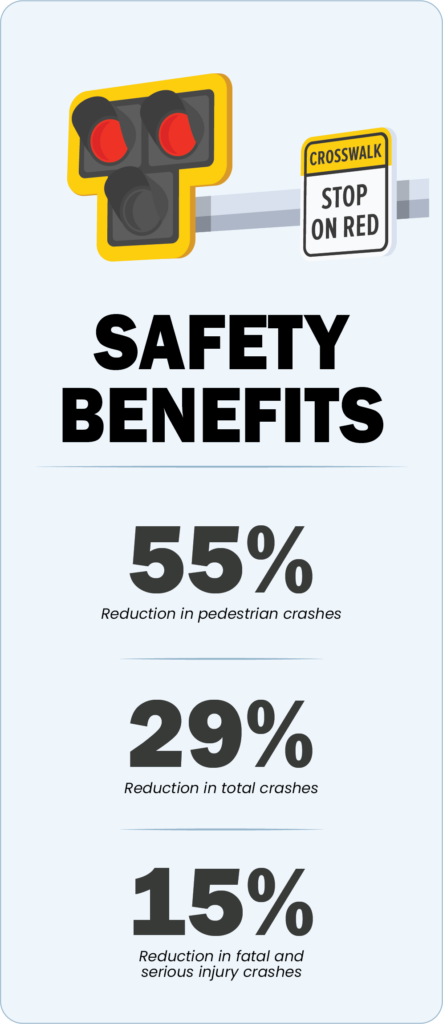The pedestrian hybrid beacon (PHB) is a traffic control device designed to help pedestrians safely cross higher-speed roadways at midblock crossings and uncontrolled intersections. The beacon head consists of two red lenses above a single yellow lens. The lenses remain ”dark“ until a pedestrian desiring to cross the street pushes the call button to activate the beacon, which then initiates a yellow to red lighting sequence consisting of flashing and steady lights that directs motorists to slow and come to a stop, and provides the right-of-way to the pedestrian to safely cross the roadway before going dark again.


Nearly 74 percent of pedestrian fatalities occur at non-intersection locations, and vehicle speeds are often a major contributing factor.1 As a safety strategy to address this pedestrian crash risk, the PHB is an intermediate option between a flashing beacon and a full pedestrian signal because it assigns right of way and provides positive stop control. It also allows motorists to proceed once the pedestrian has cleared their side of the travel lane(s), reducing vehicle delay.
Transportation agencies should refer to the Manual on Uniform Traffic Control Devices (MUTCD) for information on the application of PHBs.2
In general, PHBs are used where it is difficult for pedestrians to cross a roadway, such as when gaps in traffic are not sufficient or speed limits exceed 35 miles per hour. They are very effective at locations where three or more lanes will be crossed or traffic volumes are above 9,000 annual average daily traffic. Installation of a PHB must also include a marked crosswalk and pedestrian countdown signal. If PHBs are not already familiar to a community, agencies should conduct appropriate education and outreach as part of implementation.
